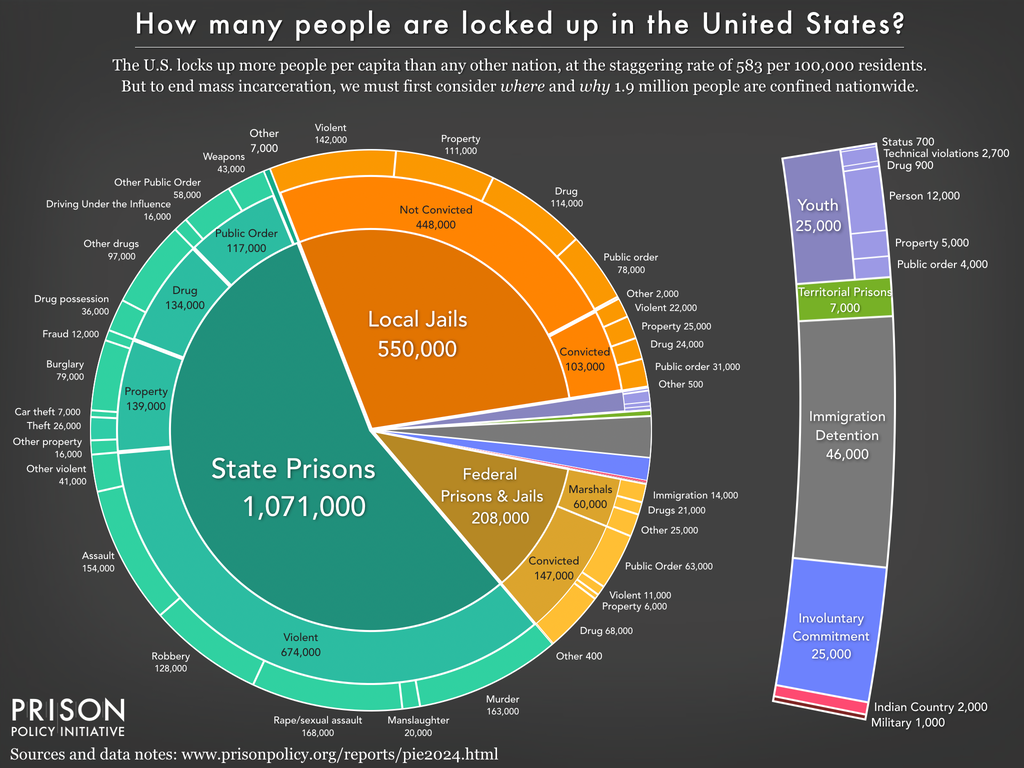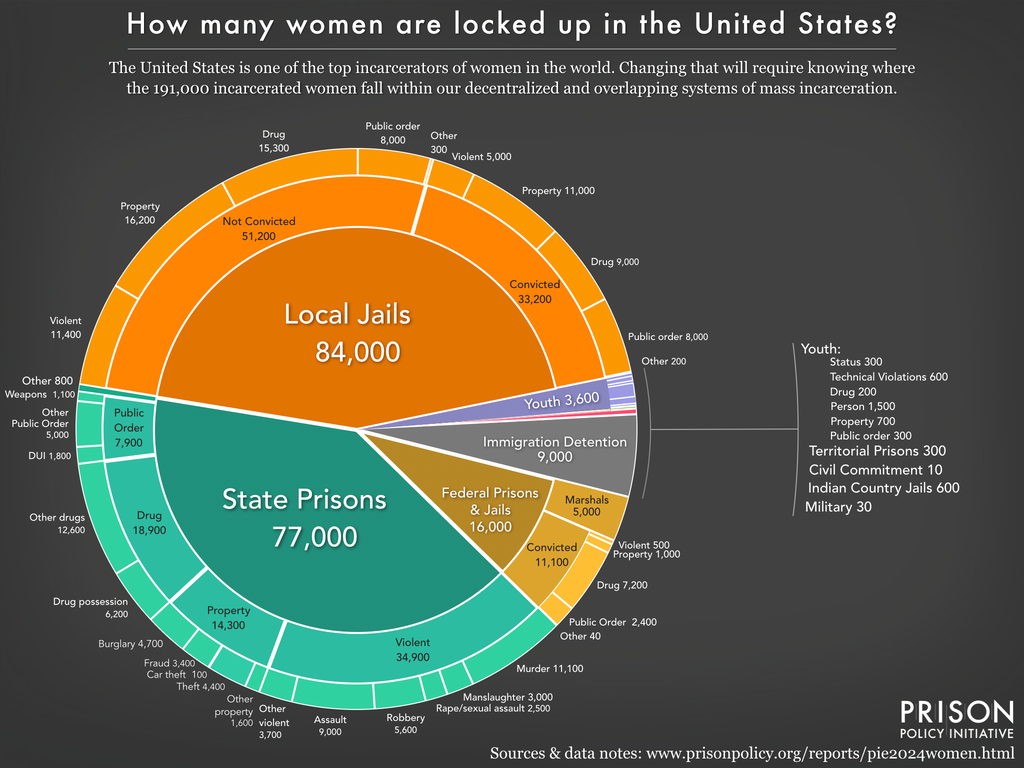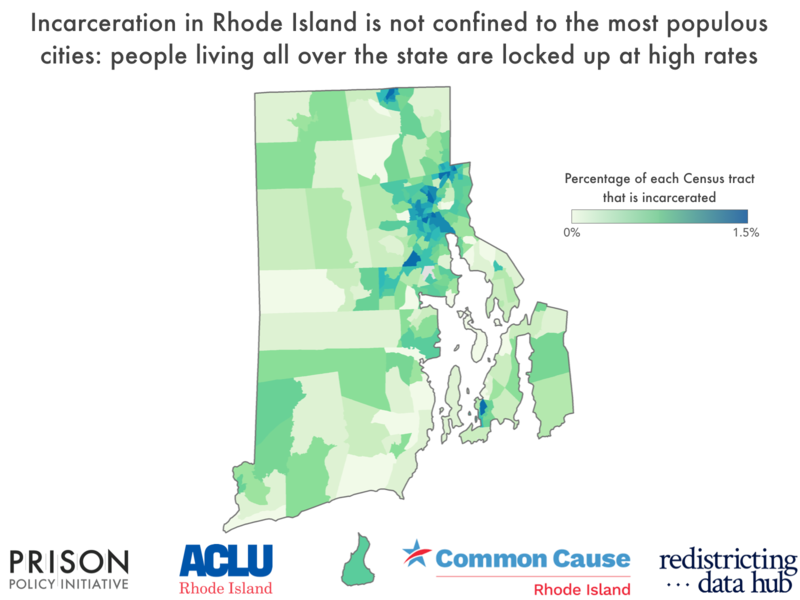New report, Mass Incarceration: The Whole Pie 2025, shows prisons and jails continuing to lock up more people after a decade of consistent declines
The newest iteration of the Prison Policy Initiative’s flagship report explains that the incarcerated population grew by about 2% overall, with significant spikes in the incarceration of immigrants and young people.
March 11, 2025
Easthampton, Mass. — Today, the Prison Policy Initiative released the 2025 edition of its flagship report, Mass Incarceration: The Whole Pie. The report offers the most comprehensive view of the nearly 2 million people incarcerated in the U.S., showing what types of facilities they are in and why. It also serves as a primer on the size and scope of the criminal legal system and busts 10 of the most persistent myths about mass incarceration and crime.

For the first time ever, the report highlights important changes and trends in the criminal legal system, including:
- The overall incarcerated population has grown by roughly 2% since our last Whole Pie report, according to the most recent data, although the total confined population is still about 13% smaller than its pre-pandemic size;
- Recent growth in incarceration is largely driven by a handful of states, with nine states accounting for 77% of all state prison growth over 2022 and 2023. Conversely, 10 states have continued to reduce their prison population since 2021.
- Courts sent 11% more young people to incarceration in 2022 than in 2021, the first increase in youth confinement in over two decades.
“This data tells the story of states taking two divergent paths,” said Wendy Sawyer, Research Director of the Prison Policy Initiative. “The first path works to reduce the number of people behind bars, recognizing that every person who is locked up represents the failure of overly-punitive policies. The other path doubles down on the misguided policies that created the nation’s mass incarceration crisis by locking more people up, destroying lives, and making communities less safe.”
The report includes 32 visualizations that shine a light on the hidden realities of the criminal legal system in America, including:
- A pie “slice” showing the 655,000 people in local jails on any given day, including over 450,000 people awaiting trial, and over 100,000 people held by jails for other agencies.
- A graphic explaining that, contrary to a popular misconception, only 8% of incarcerated people are held in privately-run facilities.
- Graphics offering details about lesser-known parts of the criminal legal system, including involuntary commitment, civil commitment, and jails on tribal lands.
On Friday, March 14, at 1 p.m. Eastern time, Prison Policy Initiative will host an Instagram Live discussion about the key takeaways from the report and answer questions from viewers. Those interested in joining this event can use their mobile phone to set a reminder and watch here.
The full report is available at: https://www.prisonpolicy.org/reports/pie2025.html








